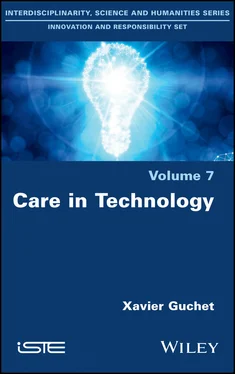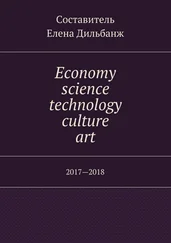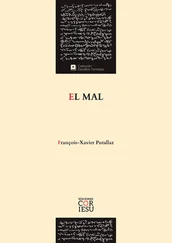I.3. The intellectualist conception of technology
There is moreover a conception of technology implicit in the two-layer model of care. This model is in fact underpinned by three assumptions affecting the relations between human life, technology, and care. The first assumption is that human life can be summed up in two dimensions which are difficult to definitively articulate: life is understood on the one hand according to the dimension of the being-in-life, and on the other hand, as a life of the mind. We are “first of all” living beings according to Lévi-Strauss, which means that we are “subsequently”, also, something else than living beings. We are not cut off from nature, certainly, but that does not mean that we have absolutely no exteriority in relation to it.
The other two presuppositions of the two-layer model of care relate to the very concept of technology. On the one hand (and thus the second presupposition), technology is defined as the whole set of means available to us to be able to intervene in nature, both inert and living, from a point of view exterior to it. This conception of technology is intellectualist. Technology is the means by which intelligence intervenes upon nature as upon an external, receptive material.
On the other hand (third presupposition), technology as such, or at least a certain type of technology, is considered to be incompatible with care. The two-layer model of care, affirming the unity of all care, is certainly unequivocal: no relationship of care cannot be conceived without technology. A negligent action, performed without precaution and devoid of any real involvement of the one who performs it, is not in the service of care. A gesture that is not careful, that is to say which is not executed with the required technique (which is learned and requires training) cannot be caregiving – such is the message of the parable of the man of Song. Caregiving requires competence. That being said, when technology refers no longer to modestly equipped know-how but to the innovations of chemical and mechanical industry, for example, its relationship to care appears less obvious, more external, and more conflicted. In sum, there are two conceptions of the relationship between care and technology: a relationship of necessary implication on one hand – there is no care without the security of a controlled and properly equipped action, whether it is care for humans or care for nature; on the other hand, a relationship of exteriority in principle, making problematic the possibility of caregiving when the concept of technology signifies, to continue the example, the devices of mechanical industry and chemical products.
The first assumption, affecting both contradictory meanings of the concept of life, is absolutely essential and commands the other two. Indeed, it is because life, in humans, is regarded as dual, consisting of a subject pole (intelligence, the spirit) and an object pole (the body, the being-in-life), that technology must inevitably be understood according to the same division: it is an emanation of the subject pole and it applies to the object pole from a point of view external to it. An intellectualist concept of technology is the result of a bifurcated conception of life in humans. In addition, to the extent that its intervention targets the object pole, that is nature as the theatre and support of the vital processes, technology has an ambivalent relationship to care: certainly there is no care without technology, but the risk of a dissociation between performing cure and taking care is widening as technologies become technosciences.
I.4. From design of nature to care for “ordinary nature”
These three presuppositions thus constitute the unthought-of dimension of the two-layer model of care. However, in the light of the foregoing considerations, it appears more and more doubtful that this model can provide a satisfactory theoretical base for the idea of care for nature. The example of permaculture illustrates quite well the difficulty of transposing this model of care onto nature. Permaculturists 12, however, explicitly put care for nature and for humans at the heart of their system of values. They claim to have a holistic conception of the human being, refusing to separate “the body, the affective and emotional sphere, the intellect, the spiritual 13”. Therefore, they seem to exceed any bifurcated vision of care: care for the body is inseparable from care for the spirit, and care for human beings from care for the earth. “ Care for the earth. Care for people. Fair share ”: the motto of permaculture gestures toward a unitary vision of care, and toward a non-dual conception of human life. However, the continuum of care seems to be contradicted here by the prioritization of the concept of design. Permaculturists speak in fact of a real change of paradigm. Their analysis is as follows: historically, human groups have grown up in highly diverse habitats. This accumulated experience is a wealth of which permaculture intends to take advantage, drawing on traditional knowledges and know-how. On the whole, however, the growth of the human population on Earth was more like a fumbling adventure than a conscious plan. In place of this globally blind human expansion, the permaculturists intend to substitute a planned habitation, supported by specific knowledge relating to the environment and to the operation of living beings. It is now a matter of thinking of habitation from the viewpoint of design – to propose a “permacultural design”. However, if we can understand what permacultural design entails at the level of the farm or even of the territory, what becomes of this vocation of designer when the scale of intervention becomes the Earth itself (care for the Earth)? Must we admit that the human must become the chief designer of global nature? This would be a strange way to defend the idea of care for nature. It is hard to see in any case how we would escape the ambition of becoming masters and owners of nature. “How can one set oneself up as a designer of the world while acknowledging that one is subject to it?” asked Vilèm Flusser (Flusser 1999).
A dual conception of the human; an intellectualist conception of technology; the idea that some technologies are in essence contradictory to care (permaculturists ban mechanization as well as chemical inputs from their farms): permaculture remains well and truly dependent on the two-layer model of care and its assumptions, which leads to a difficulty in rendering robust the goal of care for nature or, in the terms of the permacultural philosophy, care for the earth.
In sum, Aliénor Bertrand sees clearly when she stresses how much the idea of taking care of nature risks surreptitiously returning to a dualistic anthropology – even that one which, in seeing humans as beings outside of nature due to their reason or their spirit, has led to the most predatory behaviors in respect of the natural world. The sincerity of permaculturalists is of course not in question here, and neither are the truly caregiving modalities of their relationships with the cultivated land. That being said, they seem to continue to conceive of the human according to a duality of perspectives, as living beings belonging to nature in their organism, but not in their technological intelligence. Humans belong to nature, but they remain designers of nature. They must simply create a better design for it.
How to get out of this impasse in order to better understand the conditions of a more caring technological action? For what should this action be caring, if not for nature taken globally? A possible answer comes from one current of environmental ethics, the ethics of so-called “ordinary” nature, whose diagnosis is almost that which we have just established: considering all of nature as an object of care, especially by giving it an intrinsic value, in no way leads to escaping from the dualism of the human being and nature; on the contrary, it leads to a hardening of this dualism because the human, despite the assertion that it remains a living being among living beings, appears engaged in a confrontation with nature which has nothing to do with the dialogue of the living being and its milieu. As emphasized by French philosopher Rémi Beau (2013), the shift of environmental ethics toward the concept of care for ordinary nature (i.e. to care, not for nature, but for natural things in our daily environment), could then allow us to dispense with the double conception of a human being which despite everything remains outside of nature, and of a nature without humans.
Читать дальше











